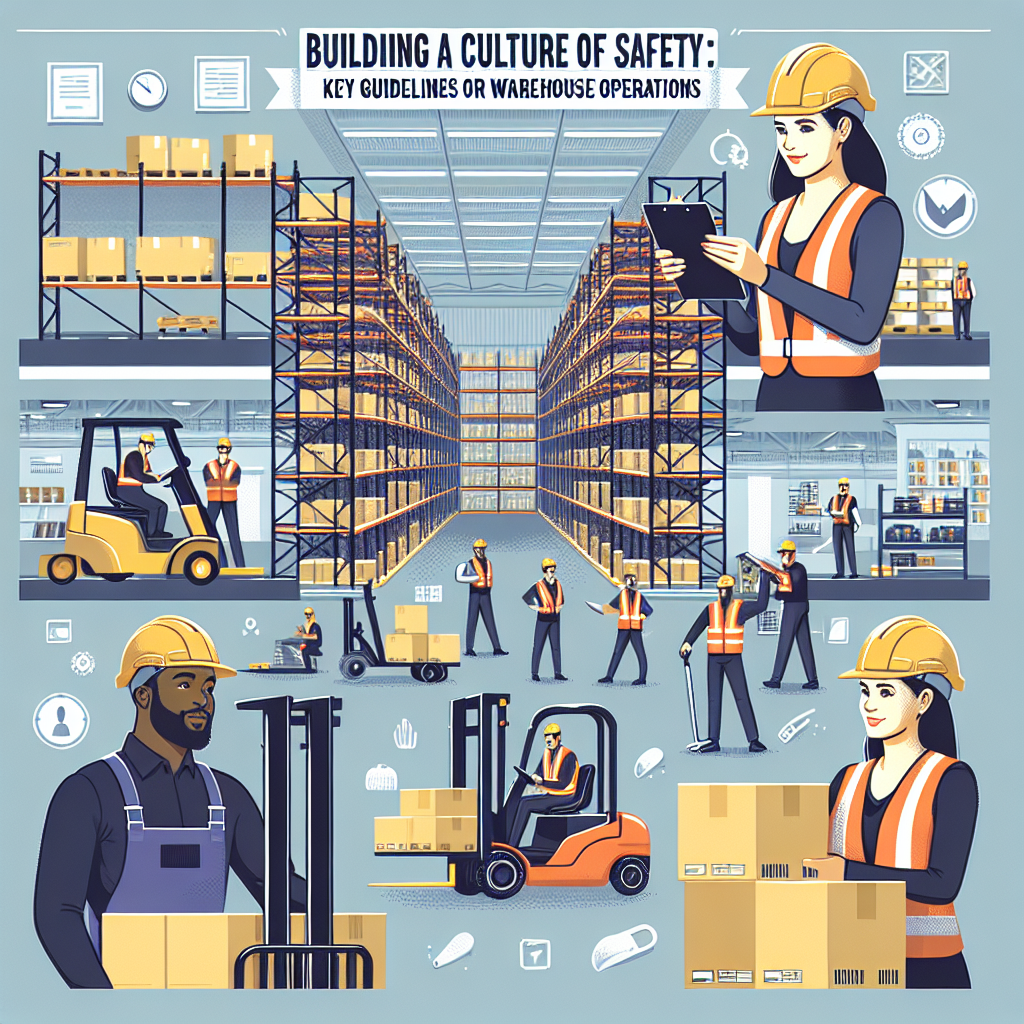In today’s fast-paced world, warehouses are bustling hubs of activity and efficiency. However, amidst the relentless energy, one crucial element must never be overlooked: safety. Establishing a culture of safety should be a top priority for all warehouse operations. Here’s how you can implement key guidelines to ensure the well-being of your employees, enhance productivity, and foster a positive workplace environment.
Understanding the Importance of a Safety Culture
A strong safety culture goes beyond just compliance with regulations; it embodies the values and behaviors maintained by every member of the organization. When safety becomes part of the warehouse’s identity, it results in:
- Reduced Accidents: Fewer injuries mean a healthier workforce and less downtime.
- Increased Morale: Employees who feel safe are generally more engaged and satisfied with their jobs.
- Enhanced Productivity: A safe environment reduces distractions, allowing employees to focus on their tasks more effectively.
- Cost Savings: Fewer accidents can lead to lower insurance premiums and less spending on medical expenses.
Leadership Commitment: Setting the Tone
Establishing a culture of safety starts at the top. Leadership needs to show commitment by prioritizing safety in every decision. Here are some actionable strategies:
- Lead by Example: Management should adhere to safety protocols consistently, demonstrating that safety matters.
- Communicate Openly: Maintain transparent communication regarding safety policies and expectations. Encourage employees to voice concerns and suggest improvements.
- Invest in Safety Training: Regular training sessions not only keep everyone informed about safety practices but also reinforce the importance of these protocols in daily operations.
Empowering Employees: Making Safety Everyone’s Responsibility
A safety culture thrives when every employee feels empowered to take ownership of their environment. Encourage your team to be proactive:
- Establish Safety Teams: Form teams comprising employees from various levels to oversee safety initiatives.
- Recognize and Reward Safe Practices: Acknowledge employees who exemplify safe behavior; this could be through monthly awards or shout-outs in meetings.
- Provide Resources: Ensure that employees have access to necessary safety gear and are familiar with emergency procedures.
Regular Training and Drills: Preparation is Key
Safety isn’t a one-time initiative; it requires continuous learning. Implementing regular training and drills can help keep safety at the forefront:
- Conduct Regular Safety Workshops: Focus on various aspects of safety that are relevant to your operations.
- Simulate Emergency Scenarios: Practice drills for situations like fires or chemical spills to prepare employees for actual emergencies.
- Seek Feedback: After training sessions, ask for input on how to improve both the session and safety protocols in place.
Open Communication Channels: Encouraging Dialogue
Creating a feedback-friendly environment is crucial in building a culture of safety. Here’s how you can foster open communication:
- Safety Reporting Systems: Implement a system where employees can report hazards or incidents anonymously and without fear of reprisal.
- Regular Safety Meetings: Host meetings to discuss ongoing safety concerns, updates on policies, and gather input from employees about their experiences and suggestions.
- Utilize Technology: Consider using apps or software that encourage employees to report safety issues in real-time.
Continuous Improvement: Evolving Safety Practices
A safety culture isn’t stagnant; it evolves based on the needs and experiences of the workforce. Embrace continuous improvement with these strategies:
- Conduct Regular Safety Audits: Evaluate current safety policies and practices, identify areas for improvement, and take actionable steps to enhance safety.
- Stay Updated on Regulations: Regularly review local and national safety regulations to ensure compliance and discover new best practices.
- Investigate Incidents: When accidents occur, conduct thorough investigations to understand root causes and ensure that lessons are learned for future prevention.
Celebrating Safety Milestones: Reinforcing Commitment
Recognizing progress in safety can motivate your team and reinforce a safety-first mindset. Here’s how you can celebrate:
- Safety Milestone Events: Host events or gatherings to celebrate achieving safety goals, like a certain number of days without accidents.
- Employee Spotlights: Feature stories of team members who have made significant contributions to safety initiatives in company communications or bulletin boards.
- Annual Safety Awards: Create awards for employees or teams that consistently prioritize and advocate for safety.
Conclusion: A Shared Responsibility
Building a culture of safety in warehouse operations is not merely about adhering to regulations or achieving metrics. It’s about fostering an environment where every individual feels a personal responsibility toward maintaining safety. By committing to these key guidelines, you cultivate a workforce that not only values safety but embodies it, ultimately leading to a more productive, harmonious, and thriving workplace.
By focusing on these principles, you can create a safety-centric culture that protects your most valuable asset—your employees. Remember, safety is not a destination, but a journey that all employees must embark on together. Let’s build that culture, one step at a time.


